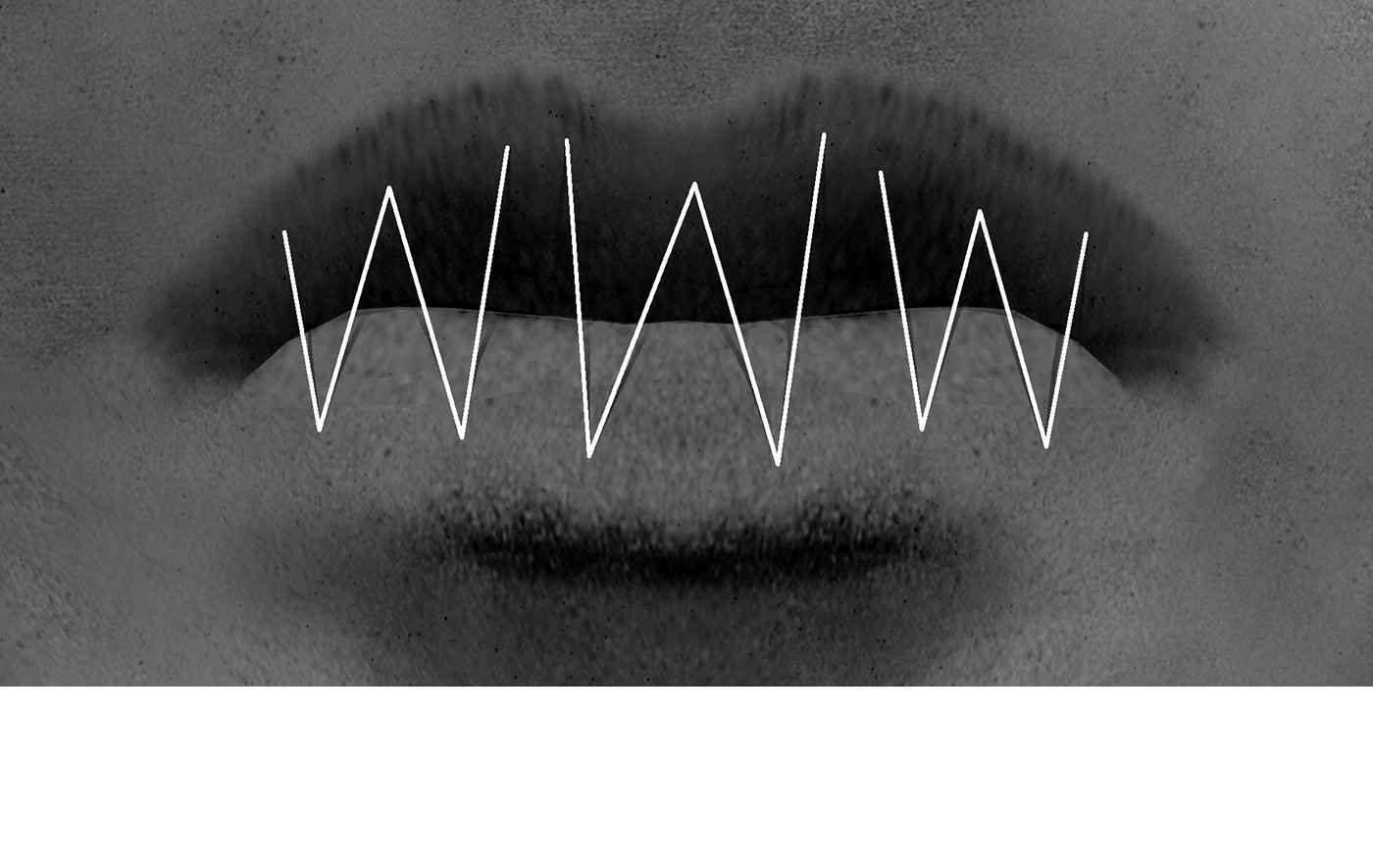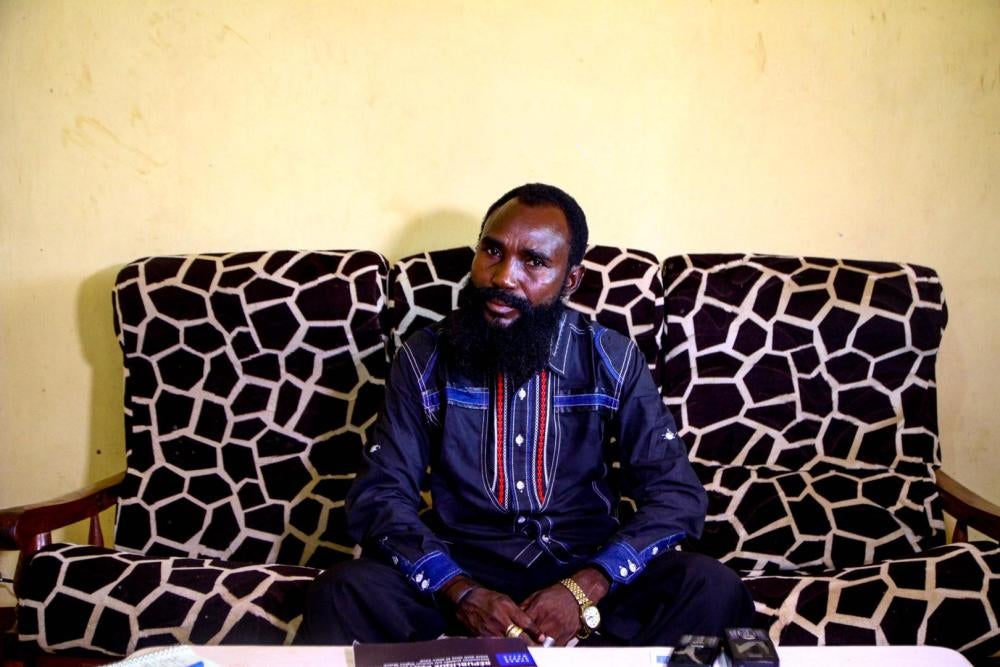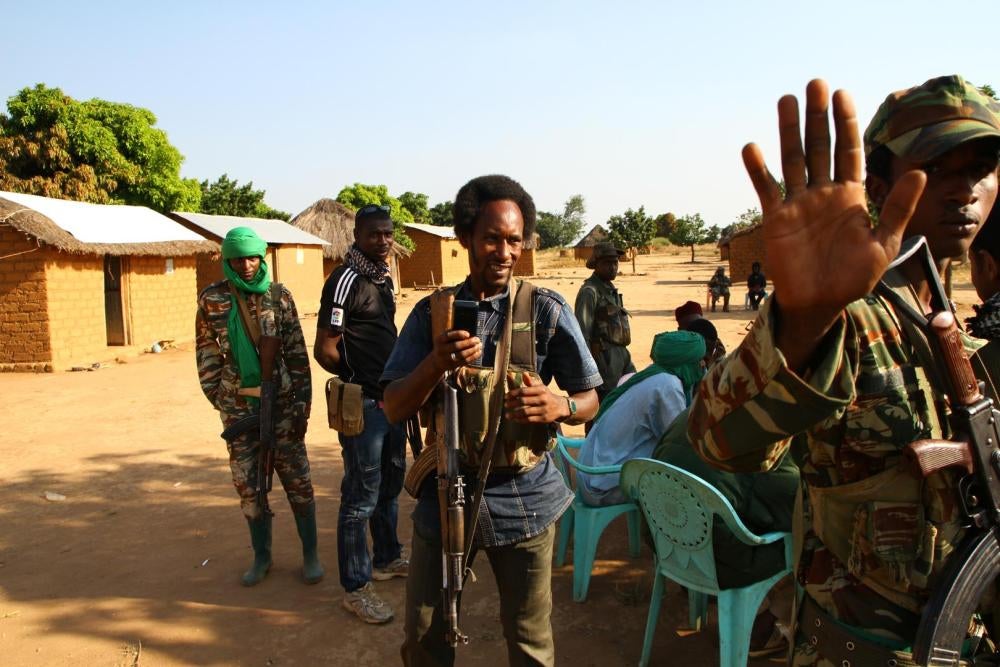L’Évêché displacement camp in Kaga Bandoro, Central African Republic, on September 29, 2016, two weeks before the Seleka attack.
© Edouard Dropsy for Human Rights Watch
L’Évêché displacement camp in Kaga Bandoro Central African Republic, on October 19, 2016, one week after the Seleka attack
© Edouard Dropsy for Human Rights Watch
A man inspects his burned hut in L’Évêché displacement camp, Central African Republic, on October 12. Seleka forces burned at least 435 huts in the camp.
© Edouard Dropsy for Human Rights Watch
A United Nations peacekeeper in Kaga-Bandoro, Central African Republic, looks out over the new displacement camp near the airstrip that formed after the October 12 attack.
© Edouard Dropsy for Human Rights Watch
The new displacement camp in Kaga Bandoro, around the MINUSCA base and airstrip, where approximately 15,000 people sought shelter after the Seleka attack on October 12.
© Edouard Dropsy for Human Rights Watch
General Mahamt Al Khatim, military head of the Central African Patriotic Movement (Mouvement Patriotique pour la Centrafrique), a Seleka group in Kaga-Bandoro. Al Khatim told Human Rights Watch that his men were not involved in the attack on L’Évêché displacement camp on October 12, 2016.
© Edouard Dropsy for Human Rights Watch
Anti-balaka fighters man a road block at Makonzi Wali, 20 kilometers south of Bocaranga and 20 kilometers east of De Gaulle, in the Koui sub-prefecture of the Ouham Pendé province, Central African Republic, on November 26, 2016.
© 2016 Edouard Dropsy for Human Rights Watch
Self-proclaimed General, Abba Rafal, the anti-balaka leader in Bocaranga, Central African Republic. Rafal told Human Rights Watch that he does not kill civilians, but he has killed Peuhl whom he believed worked as “spies.”
© 2016 Edouard Dropsy for Human Rights Watch
Fighters from the rebel group “Return, Reclamation, Rehabilitation” (3R) in De Gaulle, in the Koui sub-prefecture of the Ouham Pendé province, Central African Republic, November 25, 2016.
© 2016 Edouard Dropsy for Human Rights Watch
Fighters from the rebel group “Return, Reclamation, Rehabilitation” (3R) in De Gaulle, in the Koui sub-prefecture of the Ouham Pendé province, Central African Republic, on November 25, 2016.
© 2016 Edouard Dropsy for Human Rights Watch
"Claude,” 21, said 3R rebel group fighters tortured him in De Gaulle, in the Koui sub-prefecture of the Ouham Pendé province, Central African Republic, after the group seized the town in late September.
© 2016 Edouard Dropsy for Human Rights Watch
A displaced girl from Boumari prepares food outside her family’s makeshift hut near the village of Bodé on November 23, 2016. Attacks by the 3R rebel group have forced at least 17,000 people from their homes in the Central African Republic.
© 2016 Edouard Dropsy for Human Rights Watch
In October 2016, Seleka rebels armed with machetes and machine guns attacked and destroyed a camp for displaced people in the Central African Republic. They killed at least 37 civilians, wounded 57, and displaced thousands of others in and around the town of Kaga Bandoro.
In northwest Central African Republic, an armed group called “Return, Reclamation, Rehabilitation” (3R) has killed civilians, raped, and caused largescale displacement over the past year. In turn, anti-balaka fighters in the area killed unarmed ethnic Peuhl and raped women and girls. As violence has increased in the eastern provinces the northwest was largely neglected by the national government and international forces.


















